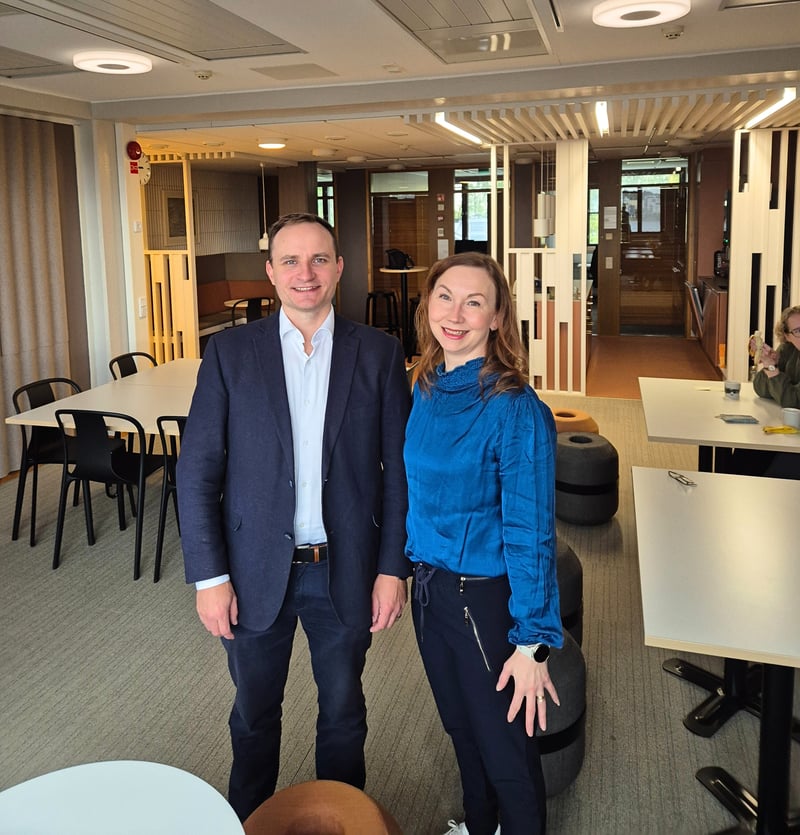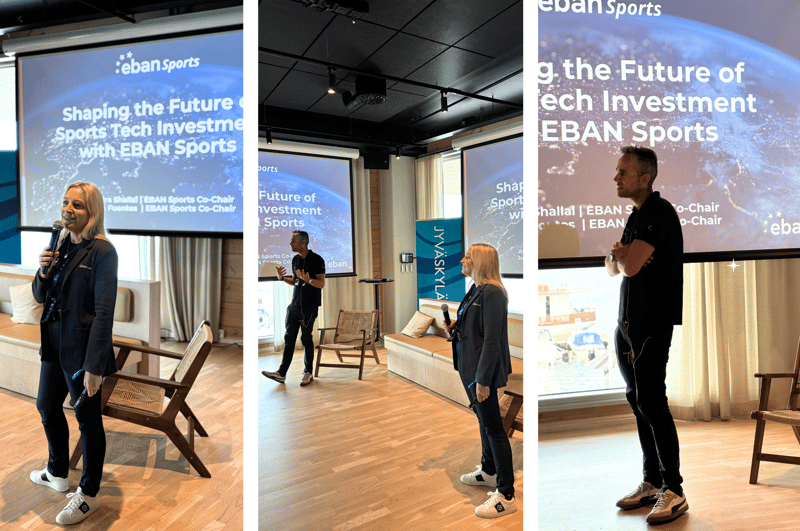Professor Neil Cronin, vice dean of research and innovation at the Faculty of Physical Education, says that technology, data and artificial intelligence play an increasingly important role in elite sports research.
– A lot of data is collected in elite sports and sports in general. However, the amount of data is so huge that it is not possible to manually extract consistencies from it. Artificial intelligence and algorithms are a very good tool for doing that, says Cronin.
– Cooperation with the Athletic Club is an excellent opportunity for us to apply new artificial intelligence methods that we have developed here at the faculty, he thinks.

The renovated San Mames stadium of Athletic Bilbao was completed in 2013
The role of artificial intelligence is growing in elite sports research
Academy researcher Timo Rantalainen, one of the participants in the trip to Bilbao, has already identified practical use cases for artificial intelligence to assess and improve performance.
– Athletic Club has been collecting exact athlete-specific data from games and practices for several years. With the help of machine learning, we are able to identify temporal trends and thereby predict which situations or conditions increase the risk of injury, he says.
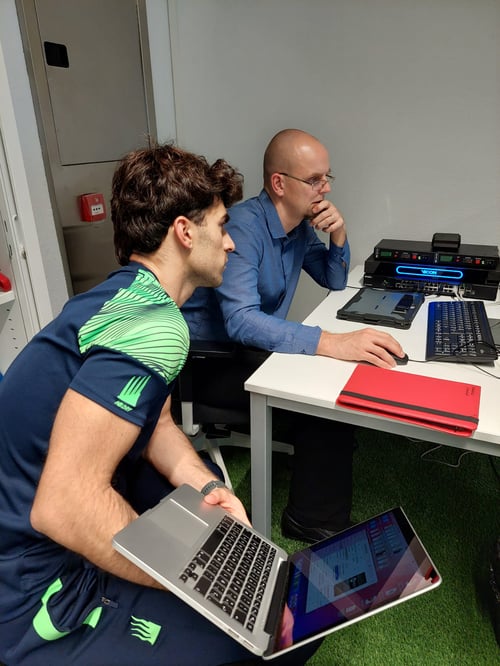 Plans for research cooperation being prepared. In the photo, Eder Bikandi and Timo Rantalainen.
Plans for research cooperation being prepared. In the photo, Eder Bikandi and Timo Rantalainen.
Rantalainen also says that in addition to data processing, artificial intelligence can be used in many other ways in research. For example, machine vision can analyze an athlete's movement.
– Let's think, for example, of an athlete recovering from an injury, whom a physiotherapist films on video and later manually adds details of the development in the material. Machine vision analyzes human movement automatically and no separate manual report is needed, he gives an example.
The researchers who visited Bilbao believe that the jump test, which has been used for a long time in Jyväskylä, would also be suitable for use by Athletic Club. A simple test performed daily gives a quick snapshot of the athlete's condition and its development. With current methods, the jump test is filmed, for example, on a smartphone, and artificial intelligence gives quick feedback.
– The jump test can be used to monitor the training load, but it also helps optimize development, Rantalainen mentions.
Impressive resources for female soccer players
Dissertation researcher Eero Savolainen's attention was particularly drawn to the resources of women's football in Bilbao, which are equal to those of men's teams. The facilities are top class and the players on the representative team are all fully professional.
– One of Athletic Club’s goals is reducing injuries among female soccer players. They have really convincing epidemiological evidence of how the number of injuries has been halved in the last 10 years. It shows that when things are consistently developed, real results follow, says Savolainen.
-–In practice, the development work done in men's football can also be applied to women's football to improve performance, although small differences might exist, Savolainen reflects.
From the perspective of cooperation, he considers the strong research knowledge and know-how gained from strength training to be one of the Finns' strengths.
– I believe that the University of Jyväskylä's long research tradition in strength training could bring something useful to the female soccer players of the Athletic Club.
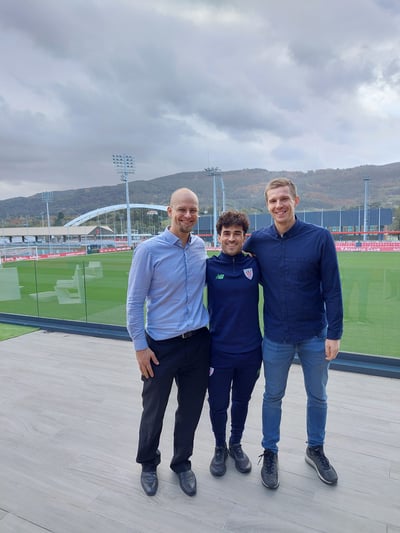 University of Jyväskylä researchers Timo Rantalainen (left) and Eero Savolainen (right) visiting Athletic Club's training fields with Eder Bikandi (center).
University of Jyväskylä researchers Timo Rantalainen (left) and Eero Savolainen (right) visiting Athletic Club's training fields with Eder Bikandi (center).
Cooperation with long-term goals
Nina Rautiainen, project manager of Business Jyväskylä, highlights the role of the Athletic Club as an influencer in society that brings together actors in the region.
– It was interesting to notice how strong the culture is in this community and how everyone in Bilbao pulls together, including the innovation managers of companies and the physical trainers of sports organizations, says Rautiainen.
– Cooperation between growth companies in Jyväskylä and Bilbao will be increased. Matches have already been found, and concrete work will start next year, she promises.
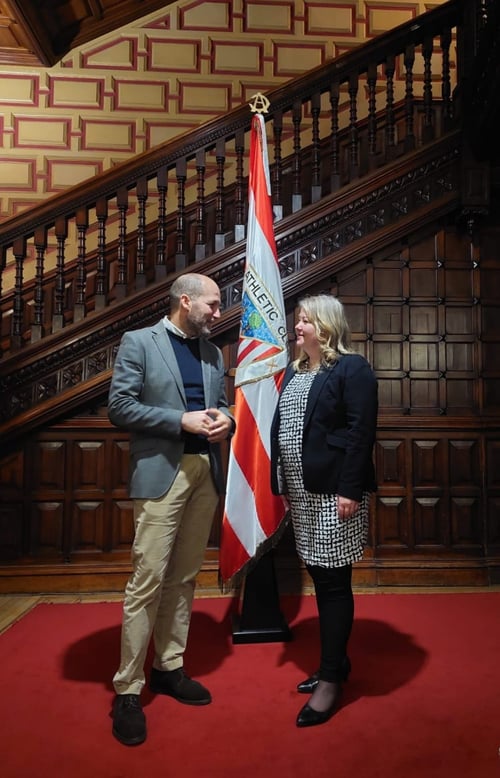
Borja Gonzalez, Chief Business and Innovation Officer of Athletic Club Bilbao, and Nina Rautiainen, Project Manager of the City of Jyväskylä's innovation ecosystem, discussed the cooperation.
The Finns are most impressed by the openness with which the cooperation in Athletic Club is building up.
– We clearly see that they have a genuine desire to work with us. We spent a lot of time at the training facilities at Lezama during our visit, gained insight on what they do and the team listened carefully to our questions, the participants of the trip say.
– You can see what is close much better from far away. Cooperation with a top club like Athletic Club is also useful because it helps us to better see our own strengths, Savolainen reflects.
Rautiainen states that the cooperation between Jyväskylä and Bilbao is a concrete example of the societal impact of research.
– And an example of what cutting-edge research can lead to at best. A joint contribution, doing things together, pulling together, she says.
Read more: Jyväskylä and Bilbao explore human performance side by side


